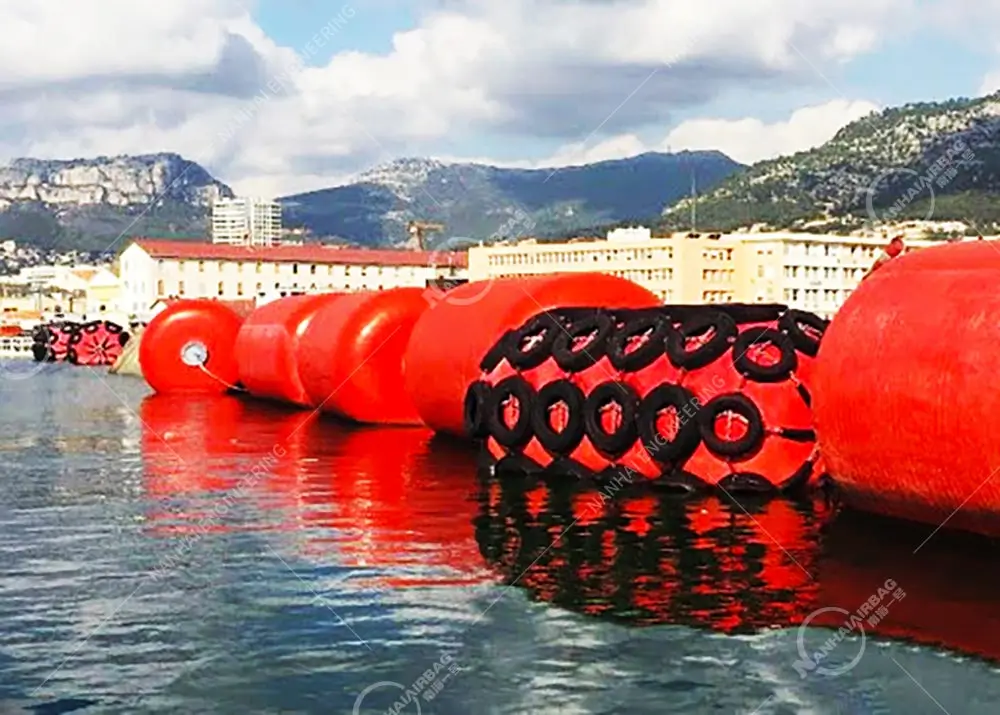What Affects the Cost of Foam Fenders?
06/04/2025Are Pneumatic Fenders Recyclable? Environmental Considerations
06/05/2025Are Foam Filled Fenders Environmentally Friendly?
Foam-filled marine fenders offer a greener alternative to traditional fender systems. These fenders use closed-cell polyethylene or EVA foam wrapped in a polyurethane skin, which makes them both tough and unsinkable. Thanks to their durable design, they last longer and reduce waste from frequent replacements.

Why Should We Care About This?
Today, sustainability isn’t just a buzzword—it’s a real concern, especially in the marine industry. Imagine a port constantly replacing worn-out rubber fenders. Each replacement means more waste and more production, which isn’t great for the planet. On the other hand, foam-filled fenders can reduce this cycle. By choosing longer-lasting solutions, we help cut down on landfill waste and resource consumption.
Key Environmental Advantages of Foam-Filled Fenders
Foam fenders last longer, which reduces environmental waste.
Manufacturer NANHAI designs them to resist saltwater, UV rays, and heavy impacts. Because of this, ship operators don’t need to replace them often. Fewer replacements mean less waste and lower environmental impact over time
Recyclable materials make foam-filled fenders a smarter choice.
Instead of ending up in landfills, the foam and polyurethane used in these fenders can go back into the production cycle. This helps promote a circular economy and keeps valuable materials out of the environment.
They require very little maintenance.
Unlike pneumatic fenders that need constant air pressure checks, foam fenders are ready to go with almost no upkeep. This not only saves time and money but also reduces the carbon footprint related to maintenance activities.
They improve marine safety without harming the environment.
Since these fenders don’t deflate suddenly, they provide consistent protection during docking. This extra layer of safety reduces the chances of accidents, which could otherwise cause oil spills or other environmental harm.
People Also Ask
What materials do manufacturers use in foam-filled fenders?
They typically use closed-cell foam like polyethylene or EVA inside and wrap it with a tough polyurethane skin. This combo delivers great energy absorption and durability in tough marine settings.
How do foam fenders compare to rubber fenders?
Foam-filled fenders outlast rubber fenders, need less maintenance, and use recyclable materials. That makes them both cost-effective and eco-conscious.
Can you use foam fenders on different types of vessels?
Yes! They work well on everything from oil tankers and cruise ships to navy vessels. Their flexibility makes them ideal for busy ports with mixed ship traffic.
Do foam-filled fenders need special tools for installation?
Not at all. Their lightweight structure and built-in buoyancy make them easy to install without heavy equipment or complex tools.
Conclusion
Foam-filled fenders aren’t just strong—they’re environmentally smart. They last longer, reduce marine waste, and are made from recyclable materials. As more ship operators aim to cut emissions and lower maintenance costs, switching to sustainable fender solutions becomes a clear choice.
At NANHAI, we specialize in advanced marine fender technology, including eco-friendly foam filled fenders tailored to different vessel needs. Whether you’re upgrading an existing port or equipping a new terminal, we’re here to help you protect your assets and the environment at the same time.
Choose NANHAI. Choose smarter, greener marine protection.
